The pomegranate fruit dominates the city of Granada. All the street signs and even some manhole covers feature the pomegranate (granada in Spanish). An alternative reason for the name is the old Jewish community called Garnata al Jahud which was located at the foot of the La Sabika hill on which the Alhambra stands today. It is one of the most beautiful and memorable cities we have been to and evokes excitement whenever it is mentioned around travelers who've been there.
The Alhambra (short form of an Arabic phrase meaning red castle), perched on its hill dominates the city's landscape. It was the lavish home of the 13th and 14th century Nasrid emirs who used it as a fortress-palace. It houses several structures of which the Palacio Nazarines and the Generalife (pronounced heneraliffey, meaning Architect's Garden - certainly not an insurance company) are the most magnificent.
The Palacio Nazarines is considered the most brilliant Islamic building in Europe. It is almost as if their builders (Yusuf and Mohammed V) knew of their impending doom and the subsequent domination of the Christian faith over Europe and went out of their way to ensure that their architecture commanded the respect of future visitors. It would not be possible to take in all its splendour in a single visit as one is bombarded by courtyard followed by passageway followed by hall containing intricate geometric patterns, stalactite (muqarras) vaulting, Arabic inscriptions, finely carved wooden ceilings, richly ornamented domed ceilings - the list goes on. The most photographed part of the palace is the courtyard (Patio de los Leones) containing the famous Alhambra lions channeling the fountain water through their mouths. The impact of the palace on the viewer is compounded by the crowds that throng the Palace. During peak season, it may be required to book tickets online as they get sold out quickly. We did not have to do this in December, but we did get a designated time of entry into the palace. The rest of the Alhambra and the Generalife, we were free to explore at our own leisure. During the time of the emirs, the public could get no farther than the Mexuar, the ante chamber at the entrance to the palace. We could not keep up with the names of the various interior spaces (Hall of Kings, Hall of Two Sisters, Emperor's Chambers etc.) as we went past each. Eventually, we exited the palace onto the Jardines del Partal, a large garden built to match the grandeur of the palace.
The Christian conquerers restructured and reused some of the Alhambra's other structures. The huge Palacio de Carlos V was built in 1527 but never completed. The building has a square exterior with a surprising circular inner couryard. It is now used for housing the Alhambra museum exhibiting Islamic artifacts and other temporary museums. The former palace mosque is now the Iglesia de Santa Maria. The Alhambra also includes two hotels (!), one of which was a former convent, which itself was a former Islamic palace. As we entered the Iglesia, V was taken aback at being asked to remove his hat. We were quite used to the requirement for women to cover their heads at mosques and Orthodox churches, but forgot the complementary requirement for men to bare their heads in some places of worship!
The Torre de la Vela (Watchtower) in the Alcazaba (citadel) is a great spot to get sweeping 360 degree views of Granada and the surrounding snow-covered Sierra Nevada mountains. The viewing is made all the more pleasurable if one had visited the areas being looked at (Cathedral, Plaza Nuevo, Albayzin, Sacramonte). One can get an idea of the sheer size of the cathedral when looked at from a distance. When you are in its vicinity, it is obscured by its immediately surrounding buildings.
A visit to the Generalife ended our Alhambra visit. With its tranquil atmosphere full of pools, fountains and gardens it was the summer palace where the King and his family sought refuge in summer and when they wanted to get away from the official affairs of the palace.
Standing outside the Granada Cathedral, the visitor does not get any idea about its capacious interior. It would not match Aya Sofia in terms of a massive pillar-less space, but still impresses with its size despite the presence of the pillars. We could not figure out why it needed 2 massive organs flanking several prayer rows, but they did make an impressive sight. The cathedral dates back to the 15th century but took 300 years to complete.
Video of Cathedral Interior
The Capilla Real (Royal Chapel) adjoins the cathedral and it is the resting place of Isabel and Ferdinand (Fernando) who commissioned the mausoleum. Along with them are other members of Spanish royalty, Juana La Loca (Juana the Mad - the daughter of Isabel and Ferdinand, Felipe El Hermoso (Philip the Handsome - husband of the Juana La Loca) and Miguel, the eldest grandchild of Isabel and Ferdinand. It features impressive paintings, statues and bas-reliefs.
Just south of the Capilla Real is the Alcaiceria, which was the Muslim silk exchange, now restored after a 19th century fire. It is filled with colorful shops and the sound of Arabic music fills the air.
Video of Alcaiceria
We got a rare opportunity in Granada the same evening after our arrival - a free guided walking tour organized by Granada Segway Tours. Even before we started the tour, one of the organizers gave M a free segway lesson. Our guide was Zane, a young Latvian woman who lives in Granada. The tour is customized per the wishes of the tourists and since we only had a third person in the group, it was easy enough to determine what we wanted to do. We chose the most adventurous option of exploring the wild and mysterious gypsy quarter of Sacramonte, even venturing beyond the "official" residences and walking past "unofficial" cave homes on the hillside nestled among cactus gardens. These homes have no addresses nor do the residents pay taxes. There are some residents who can well afford to live elsewhere but choose this lifestyle due to their political convictions. We reached the top of the hill by walking through the adjacent Albayzin neighborhood, itself of great historical interest. We got excellent nighttime views of Granada (dominated by the well lit Alhambra) from the top of Sacramonte.
Zane also gave us an introduction to the free tapas culture of Granada where one gets a plate of tapas with every drink (typically 2-3 Euros). With a couple of drinks or so, one can have a full meal. Options for vegetarians are limited but we managed to find the odd meatless tapas, no mean feat in a very vegetarian-unfriendly country. Later, we even found bars serving Chinese tapas!
Another aspect of Granada's contemporary culture is the collection of murals on the walls of Sacramonte and the Realejo neighborhood. Prominent among the artists is the personality of El Nino de las Pinturas. Zane introduced us to his work displayed on the walls during our walking tour. We followed her recommended route ourselves after completing our tour of the Alhambra and Campo de los Martires, as we walked downhill through the old Jewish Realejo neighborhood back to Plaza Nuevo.
The Albayzin neighborhood looks a lot better in the daylight, full of tiny squares and staircase streets put together like strands of spaghetti. There are excellent views of the Alhambra from these plazas and they also serve as anchors if you get lost in the winding streets. Some of the streets are so narrow that cars can only pass one way and bi-directional traffic is controlled by traffic lights. The walls of those streets bear scratches of large cars that tried to squeeze through. Ironically, the area's old Islamic past is being revived by modern immigrants from northern Africa. A brand new mosque with a view of the Alhambra is testament to this new influx.
Video showing scratch marks on Albayzin street wall
We finally felt the onset of winter with single digit temperatures in the mornings and evenings. Despite being totally bundled up for the nighttime walking tour, we still ended up with frozen extremities. But the city of Granada warmed our hearts like none other on this trip.


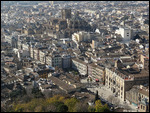

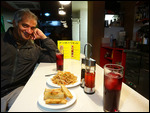

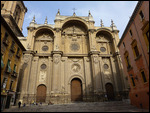
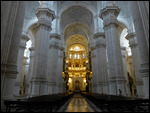
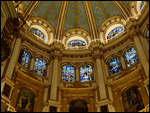







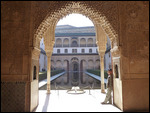
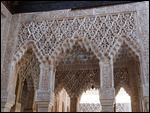

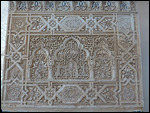


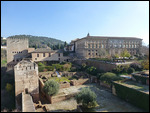
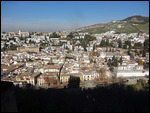
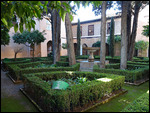
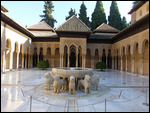

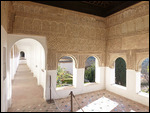

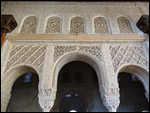
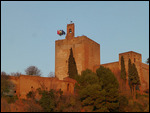

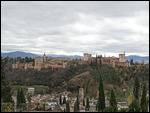


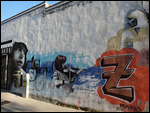
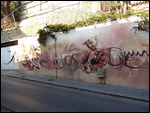


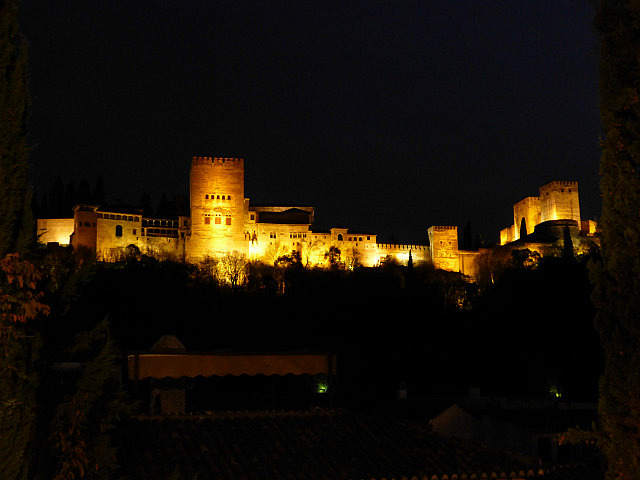
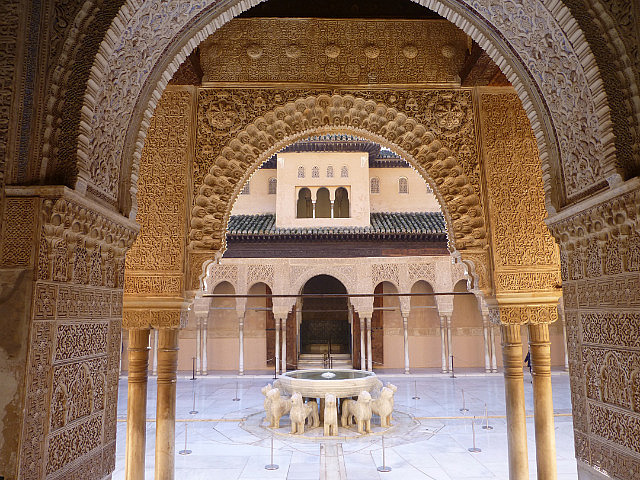
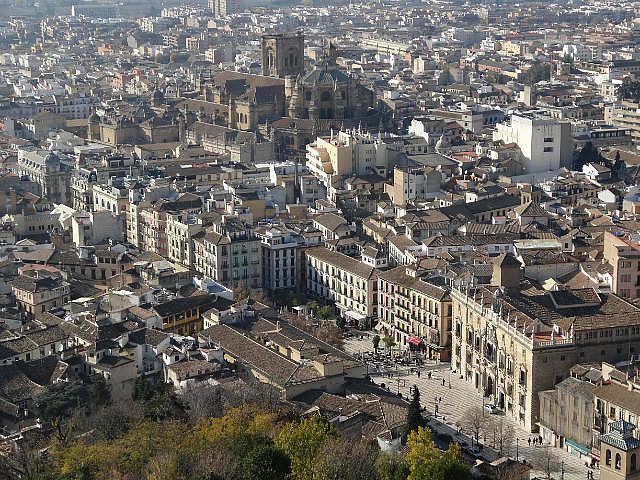
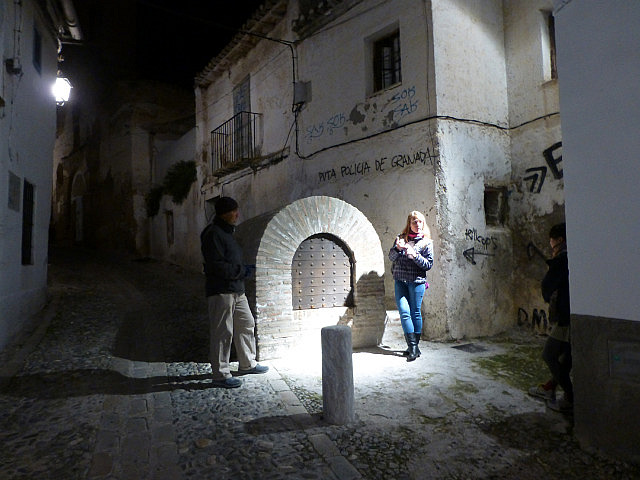
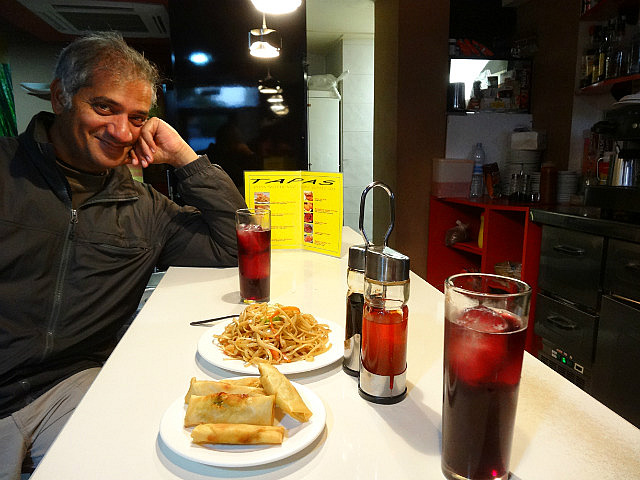
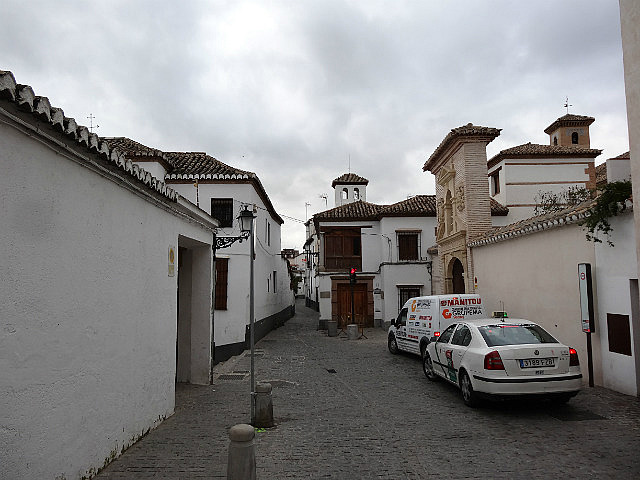


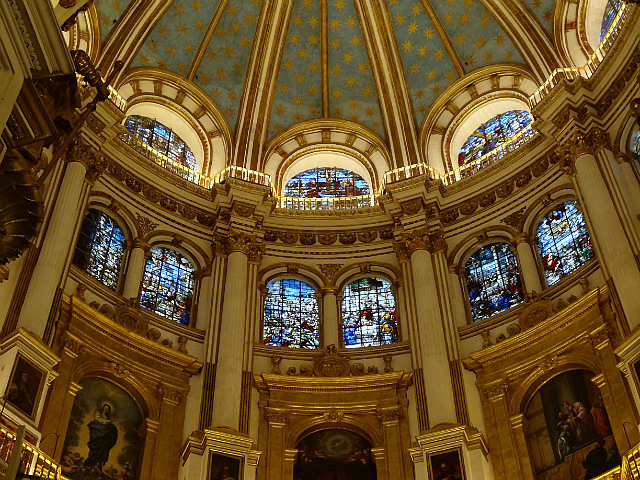
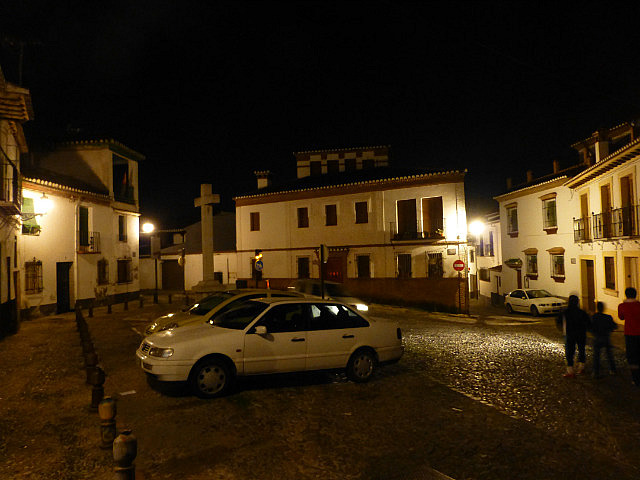

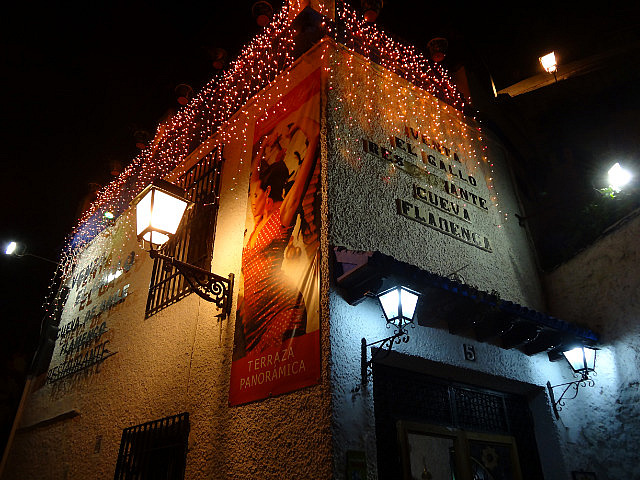
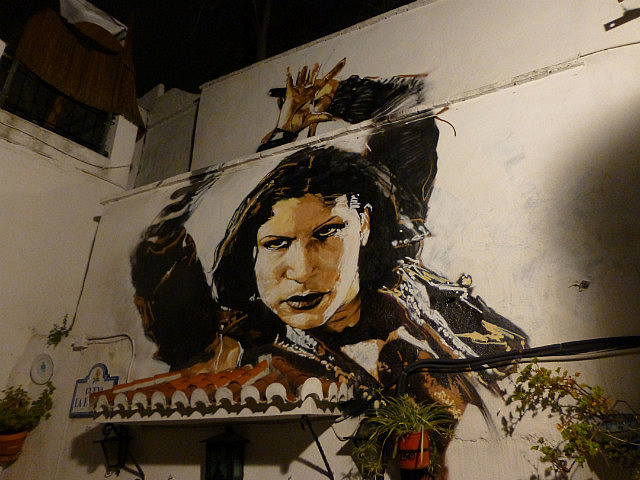
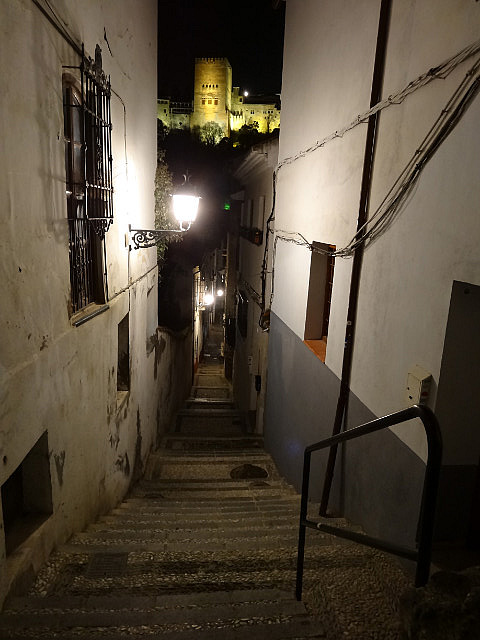
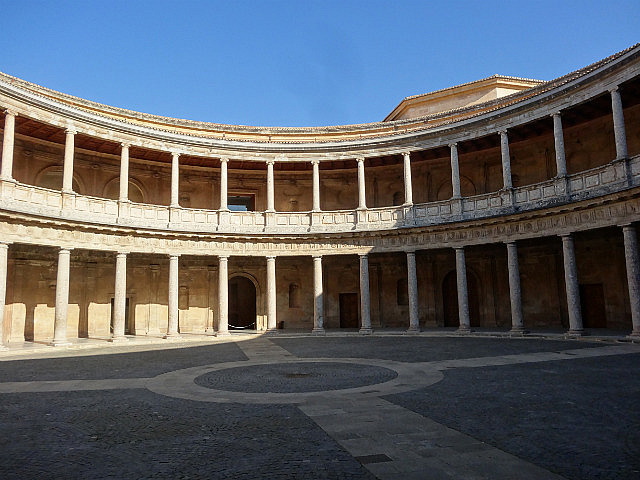




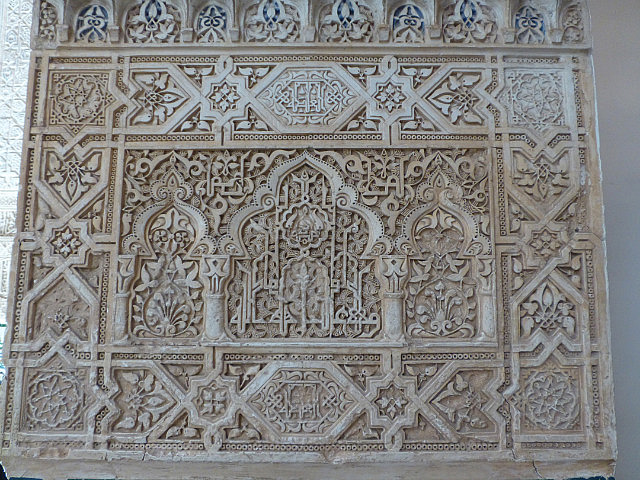
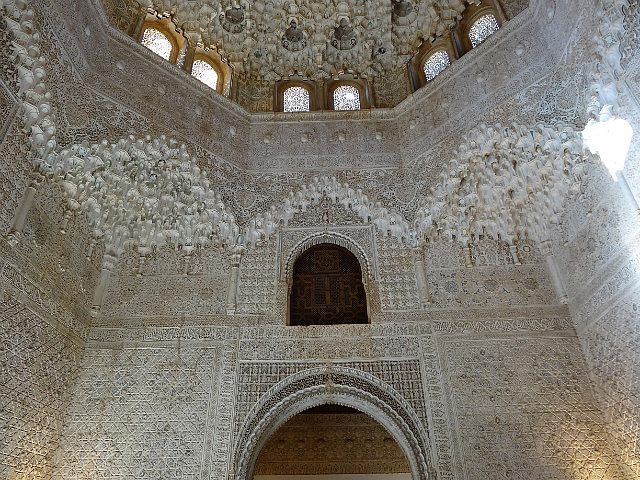

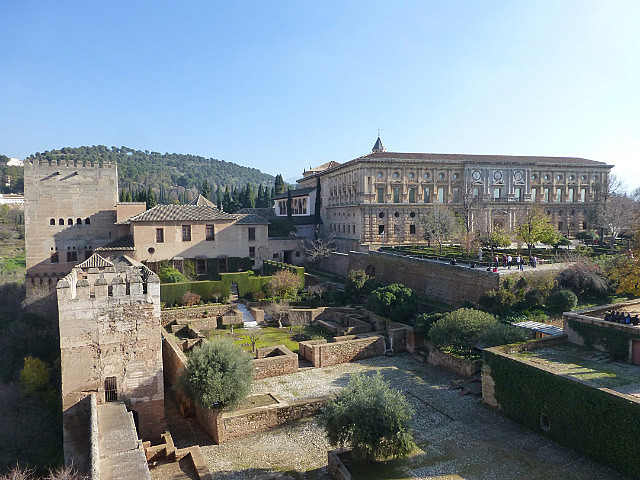
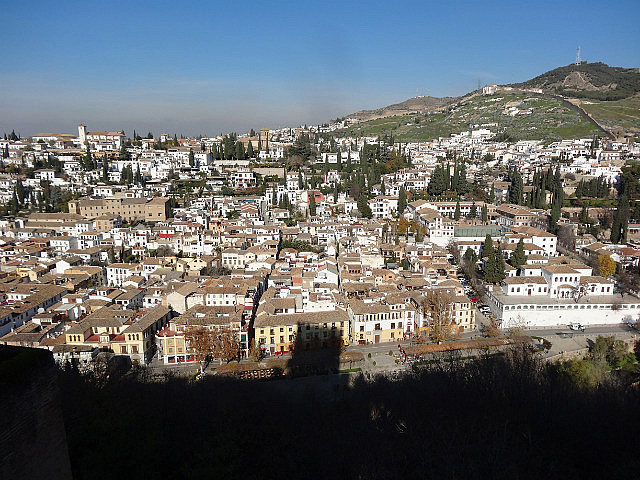
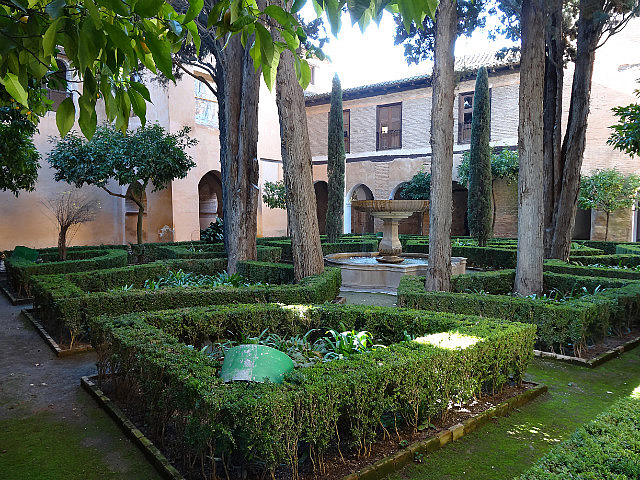
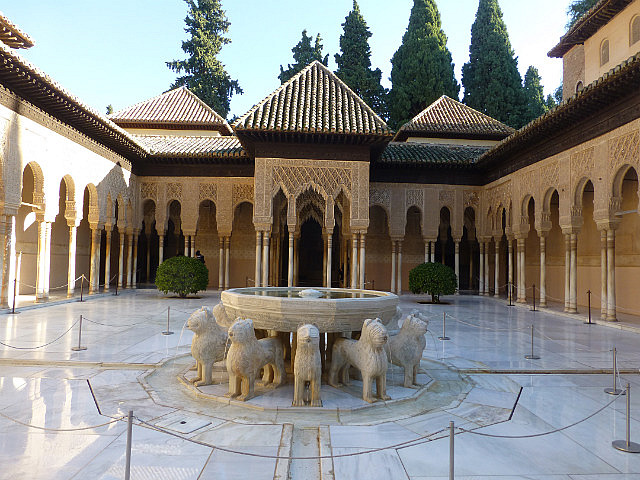
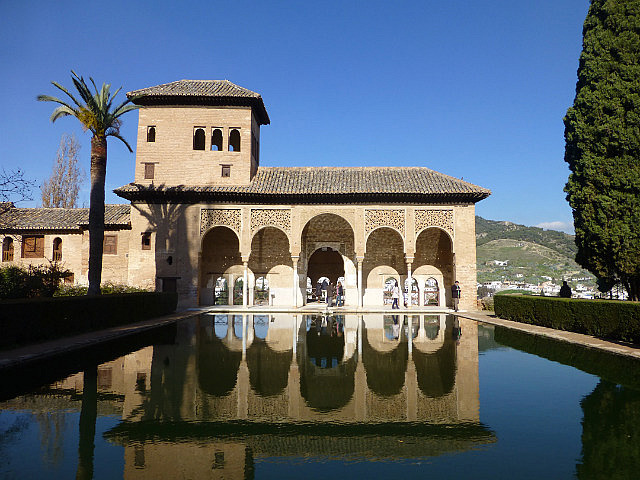
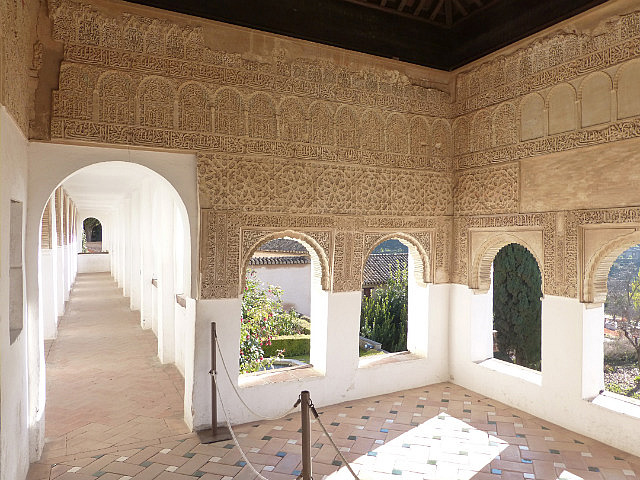
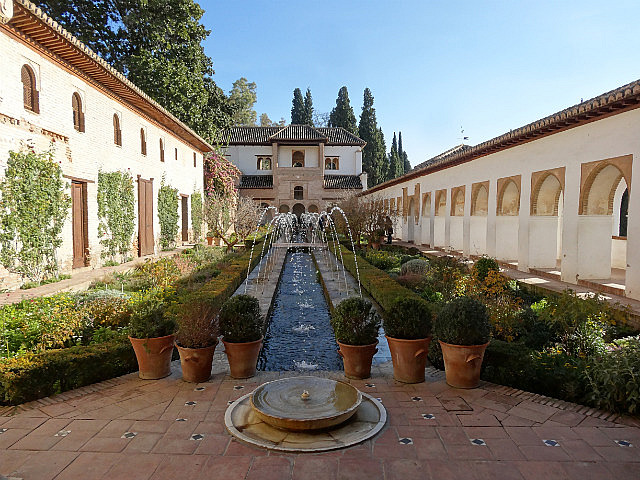

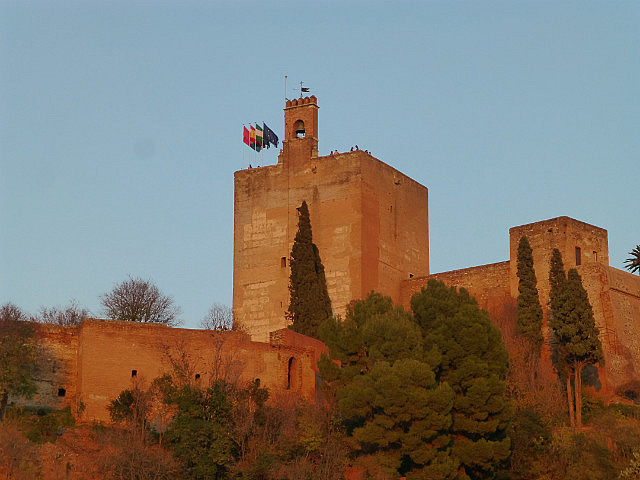
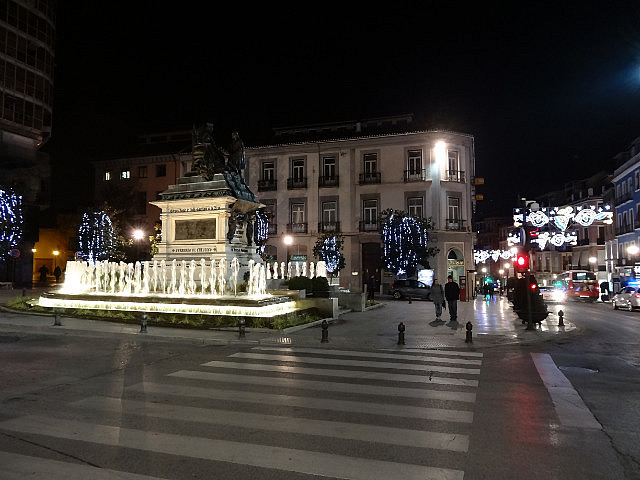
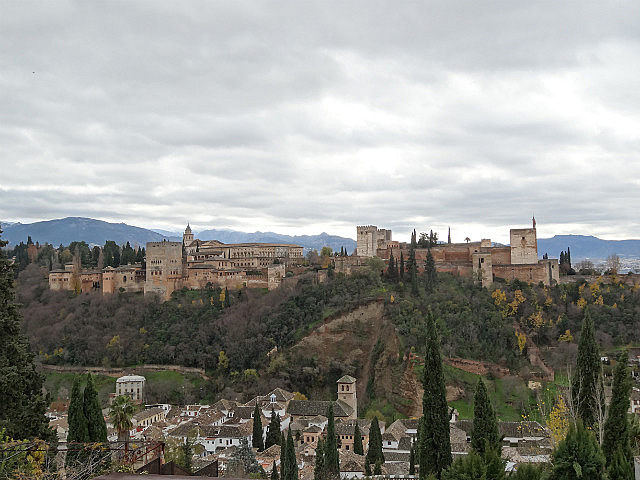
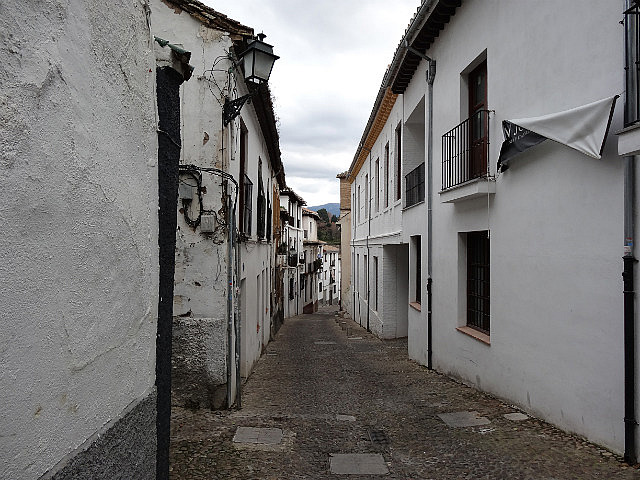
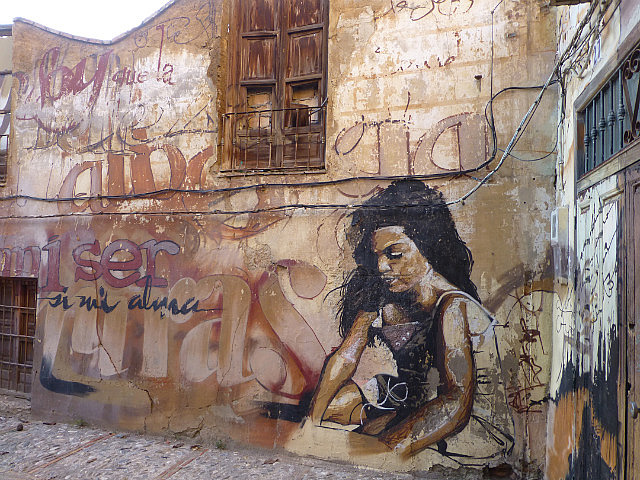
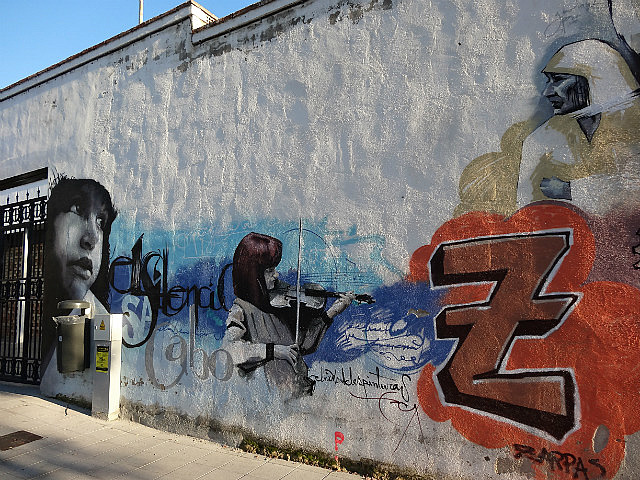
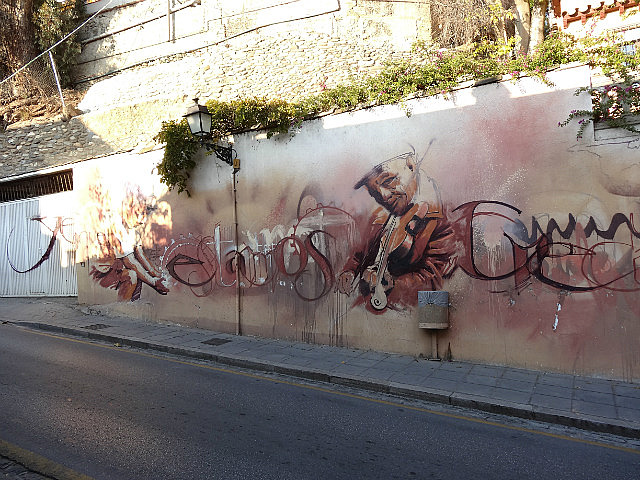
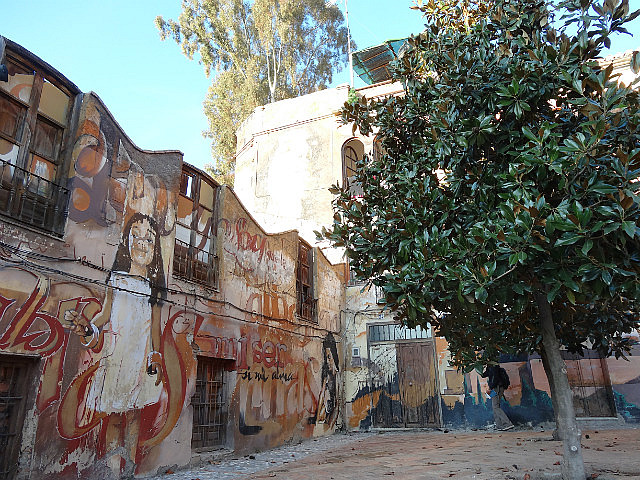
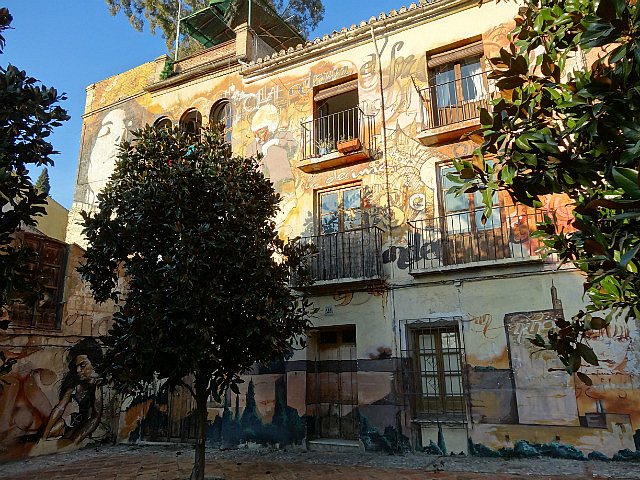
Comments